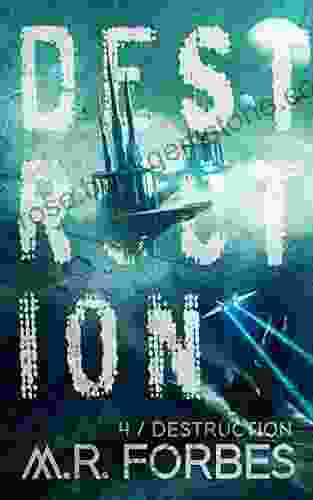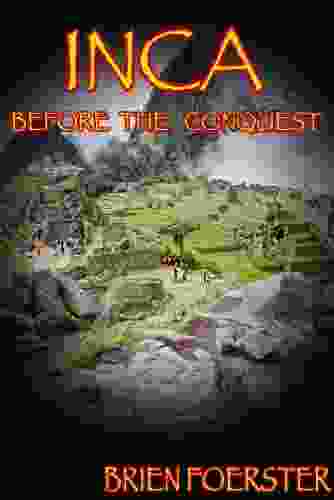Inca Civilization: A Thriving Empire Before the Conquest

Embark on a chronological exploration of the Inca Empire, a thriving civilization that flourished in the Andes Mountains before the arrival of European conquerors. Through this comprehensive article, we delve into the rich history, culture, and legacy of the Inca, unlocking the secrets of their architectural marvels, advanced social systems, and enduring influence.
4 out of 5
| Language | : | English |
| File size | : | 43689 KB |
| Text-to-Speech | : | Enabled |
| Screen Reader | : | Supported |
| Enhanced typesetting | : | Enabled |
| Word Wise | : | Enabled |
| Print length | : | 148 pages |
| Lending | : | Enabled |
Origins and Rise of the Inca Empire
The foundations of the Inca Empire can be traced back to the 13th century in the Cuzco Valley of present-day Peru. Initially, the Inca were one of many indigenous tribes inhabiting the region. However, under the leadership of Pachacuti Inca Yupanqui, the Inca began a period of rapid expansion and conquest.
Pachacuti, known as the "Transformer of the World," launched a series of successful military campaigns that brought neighboring tribes under Inca rule. His son, Tupac Yupanqui, continued the expansion, extending the empire north into present-day Ecuador and south into Chile. By the time of Huayna Capac's reign in the 15th century, the Inca Empire stretched over 2,500 miles along the Andes Mountains, making it the largest empire in the pre-Columbian Americas.
Administration and Governance
The Inca Empire was renowned for its highly organized and efficient administration. The Inca emperor, known as the Sapa Inca, held absolute power and was considered divine. The empire was divided into provinces, each governed by a governor appointed by the Sapa Inca.
The Inca bureaucracy was complex and sophisticated. Record-keeping was done using a system of knotted cords called quipus, which allowed for the recording of everything from census data to tax records. The Inca also developed a network of roads and bridges that facilitated communication and trade throughout the empire.
Social Structure and Religion
Inca society was highly stratified. The Sapa Inca and his family occupied the highest level, followed by the nobility, priests, and commoners. The Inca believed in a pantheon of gods, with Inti, the sun god, being the most important. They worshiped their gods through rituals and sacrifices, and they built magnificent temples and shrines in their honor.
The Inca also practiced a form of ancestor worship. They believed that the spirits of deceased ancestors could influence the living, so they were treated with great respect and care. Mummification was common, and the bodies of deceased rulers were often displayed in temples or palaces.
Engineering and Architecture
The Inca were skilled engineers and architects. They built an extensive network of roads and bridges, some of which are still in use today. They also constructed impressive cities and fortresses, such as Machu Picchu and Ollantaytambo.
Inca architecture is characterized by its precision and use of large, fitted stones. The Inca did not use mortar or cement, but instead relied on the careful fitting of stones to create stable and durable structures. Their buildings were often decorated with intricate carvings and colorful textiles.
Arts and Culture
The Inca were also skilled artisans. They produced beautiful textiles, pottery, jewelry, and metalwork. Inca art often depicted religious and mythological themes, and it was often used to decorate temples and palaces.
The Inca also had a rich oral tradition. They passed down stories and legends from generation to generation, and they had a system of music and dance that was an important part of their religious and cultural practices.
Conquest and Decline
The Inca Empire reached its peak in the early 16th century. However, in 1532, Spanish conquistadors led by Francisco Pizarro arrived in Peru. The Spanish took advantage of divisions within the Inca Empire and, with the help of native allies, they were able to conquer the Inca and execute the last Sapa Inca, Atahualpa.
The Spanish conquest had a devastating impact on the Inca Empire. The Inca population was decimated by disease and warfare, and their culture and way of life were suppressed. However, the legacy of the Inca Empire continues to live on in the present day. Their architectural marvels, social systems, and cultural traditions continue to inspire and fascinate people around the world.
The Inca Empire was a remarkable civilization that flourished in the Andes Mountains for centuries before the arrival of European conquerors. The Inca were skilled engineers, architects, and artists, and they developed a sophisticated system of government and social organization. The legacy of the Inca Empire continues to live on in the present day, and their achievements continue to inspire and amaze people around the world.
**Alt attribute for image:** A panoramic view of Machu Picchu, an ancient Inca city located in the Andes Mountains of Peru.
4 out of 5
| Language | : | English |
| File size | : | 43689 KB |
| Text-to-Speech | : | Enabled |
| Screen Reader | : | Supported |
| Enhanced typesetting | : | Enabled |
| Word Wise | : | Enabled |
| Print length | : | 148 pages |
| Lending | : | Enabled |
Do you want to contribute by writing guest posts on this blog?
Please contact us and send us a resume of previous articles that you have written.
 Best Book
Best Book Page Flip
Page Flip Bookshelf
Bookshelf Literary loom
Literary loom Chapter
Chapter Bookish
Bookish PageTurner
PageTurner Bibliophile
Bibliophile Story
Story Inkwell
Inkwell Bookworm
Bookworm Labyrinth
Labyrinth Plot Twist
Plot Twist Prose
Prose Paperback
Paperback Storyteller
Storyteller Sanctuary
Sanctuary Fiction
Fiction Reading
Reading Chronicle
Chronicle Read
Read Toni Bentley
Toni Bentley Ken Steele
Ken Steele C B Griesbach
C B Griesbach Sarah Spencer
Sarah Spencer Brian C Baer
Brian C Baer D B Goodin
D B Goodin David Sayers
David Sayers Troy Howarth
Troy Howarth Marceline Smith
Marceline Smith Paul Reps
Paul Reps Eve Laplante
Eve Laplante Daniel J Sharfstein
Daniel J Sharfstein William Hogarth
William Hogarth Niall Williams
Niall Williams Brittany K Barnett
Brittany K Barnett Maya Jasanoff
Maya Jasanoff Francene Hart
Francene Hart Cain Carroll
Cain Carroll Rachael Lynn
Rachael Lynn Brian Dickinson
Brian Dickinson G L Carriger
G L Carriger Cathy Johnson
Cathy Johnson Lincoln Cushing
Lincoln Cushing David H Levy
David H Levy Tim Hannigan
Tim Hannigan Tanya Lapointe
Tanya Lapointe John Waters
John Waters Mike Jack Stoumbos
Mike Jack Stoumbos Wilder Page
Wilder Page George Alec Effinger
George Alec Effinger Veronica Lawlor
Veronica Lawlor Sterling Edwards
Sterling Edwards Timothy Zahn
Timothy Zahn Joan See
Joan See Shaun King
Shaun King Nate Crowley
Nate Crowley Kamal Saleem
Kamal Saleem Michael Hingson
Michael Hingson Brian Evans
Brian Evans Kai Kupferschmidt
Kai Kupferschmidt Sallust
Sallust Russell Maddicks
Russell Maddicks Mateus Batista
Mateus Batista Guy Haley
Guy Haley Jonathan Raban
Jonathan Raban Gerald M Kilby
Gerald M Kilby Jan Grue
Jan Grue Lee Hammond
Lee Hammond Tad Crawford
Tad Crawford Carl E Schorske
Carl E Schorske Linda Grant
Linda Grant Craig Anderson
Craig Anderson Mark Arnold
Mark Arnold Rachel Felder
Rachel Felder Carol Berry
Carol Berry Catherine Porter
Catherine Porter Eric Grzymkowski
Eric Grzymkowski Delaney Diamond
Delaney Diamond Liron Yanconsky
Liron Yanconsky Brian Herbert
Brian Herbert Josh Malerman
Josh Malerman Lucy R Lippard
Lucy R Lippard R Annie Gough
R Annie Gough Shirish Deshpande
Shirish Deshpande Donald Keene
Donald Keene H Peter Alesso
H Peter Alesso Bev Sellars
Bev Sellars Matt Brown
Matt Brown Ems Publishing
Ems Publishing Vrasidas Karalis
Vrasidas Karalis Taniece
Taniece Nicolas Rothwell
Nicolas Rothwell K G Crawford
K G Crawford Brooke Barbier
Brooke Barbier Jasmine Tritten Llc
Jasmine Tritten Llc Caterine Milinaire
Caterine Milinaire Tasha Black
Tasha Black Jenny Lawson
Jenny Lawson Donna Digiuseppe
Donna Digiuseppe Remco Ensel
Remco Ensel Scaachi Koul
Scaachi Koul Frederick Joseph
Frederick Joseph Tom Segev
Tom Segev George R R Martin
George R R Martin Sabeeha Rehman
Sabeeha Rehman Maud Guilfoyle
Maud Guilfoyle Thomas Kinkade
Thomas Kinkade Susan Kennedy
Susan Kennedy Heriberto Padilla
Heriberto Padilla Janice Seto
Janice Seto Eric Bravo
Eric Bravo Leo Buijs
Leo Buijs Carole Massey
Carole Massey Dennis Tupicoff
Dennis Tupicoff Emiko Ohnuki Tierney
Emiko Ohnuki Tierney Daphne Jenkins Sheldrick
Daphne Jenkins Sheldrick Danielle Bernstein
Danielle Bernstein Maria Holderbaum
Maria Holderbaum Parshwika Bhandari
Parshwika Bhandari John Berger
John Berger Brando Skyhorse
Brando Skyhorse Griff Hosker
Griff Hosker Kevina Hopkins
Kevina Hopkins Tiffanie Didonato
Tiffanie Didonato Brandon Q Morris
Brandon Q Morris Toni Braxton
Toni Braxton Charles Kenney
Charles Kenney N K Jemisin
N K Jemisin Robert Noble Graham
Robert Noble Graham Dl Acken
Dl Acken Robbie Freeman Shugart
Robbie Freeman Shugart Jennie Batchelor
Jennie Batchelor Jay Wolf
Jay Wolf Madeleine L Engle
Madeleine L Engle John Logan
John Logan Paul Clammer
Paul Clammer Tao Wong
Tao Wong Charlene Mciver
Charlene Mciver Nikqua
Nikqua James Graham Baker
James Graham Baker Caroline Weber
Caroline Weber Tamar Arslanian
Tamar Arslanian Tod Polson
Tod Polson Bruce Bradley
Bruce Bradley Russell Harris
Russell Harris Robin Hobb
Robin Hobb Jane Urquhart
Jane Urquhart Yolanda Hadid
Yolanda Hadid Mark Wandrey
Mark Wandrey Bill Plympton
Bill Plympton C S Leaf
C S Leaf Claudia Romo Edelman
Claudia Romo Edelman Sheri S Tepper
Sheri S Tepper Camilla Erickson
Camilla Erickson Renee Rose
Renee Rose Kellie Stafford
Kellie Stafford Kris Timken
Kris Timken Ken Lozito
Ken Lozito Perry Buck
Perry Buck Carol Belanger Grafton
Carol Belanger Grafton James Mcbride
James Mcbride Edgardo Cozarinsky
Edgardo Cozarinsky D Dauphinee
D Dauphinee Kelly Sheldrick
Kelly Sheldrick Elise Young
Elise Young Dan Moren
Dan Moren Robert Barr Smith
Robert Barr Smith Lauren Kessler
Lauren Kessler Jennine Capo Crucet
Jennine Capo Crucet Brandon Massey
Brandon Massey Sarah Jane Downing
Sarah Jane Downing Erik Stafford
Erik Stafford Sara Alm
Sara Alm Bridget Quinn
Bridget Quinn Gaston Migeon
Gaston Migeon Constantin Step
Constantin Step Lonely Planet
Lonely Planet C White Foss
C White Foss Catherine Gill
Catherine Gill J C Moore
J C Moore Stephen Mertz
Stephen Mertz Kimolisa Mings
Kimolisa Mings Sandy Allison
Sandy Allison Jillian Vose
Jillian Vose James Tate Hill
James Tate Hill C J Box
C J Box Caitlyn O Leary
Caitlyn O Leary Kimi Cunningham Grant
Kimi Cunningham Grant Carly Murden
Carly Murden Brian Ashcraft
Brian Ashcraft Bryce W James
Bryce W James Brian Broome
Brian Broome Candy Moore
Candy Moore Michelle Burford
Michelle Burford Laylah Roberts
Laylah Roberts Parvati Sharma
Parvati Sharma David Gilmore
David Gilmore Mary C Olson
Mary C Olson Kelly Kordes Anton
Kelly Kordes Anton Carol Wood
Carol Wood Caroline Johnson
Caroline Johnson Cathie Ruggie Saunders
Cathie Ruggie Saunders Breeze Holding The Moon
Breeze Holding The Moon Jennifer Smith Turner
Jennifer Smith Turner S C Eston
S C Eston Michelle Kuo
Michelle Kuo Marcos Enrique Ruiz Rivero Ii Aviel
Marcos Enrique Ruiz Rivero Ii Aviel Yuwanda Black
Yuwanda Black Dean Foster
Dean Foster Tom Hayden
Tom Hayden Dave Pelzer
Dave Pelzer Dolly Parton
Dolly Parton Bwwm Love
Bwwm Love Ernesto Mallo
Ernesto Mallo W E B Du Bois
W E B Du Bois Virginia Hein
Virginia Hein Joe Palermo
Joe Palermo Tom Wolfe
Tom Wolfe Cat Seto
Cat Seto Maturin Murray Ballou
Maturin Murray Ballou D L Young
D L Young Kellee Wynne Conrad
Kellee Wynne Conrad Vladimir Sorokin
Vladimir Sorokin Jennifer Niven
Jennifer Niven Michael Moon
Michael Moon Brit Bennett
Brit Bennett Buie Harwood
Buie Harwood Mike Watt
Mike Watt Carlyn Beccia
Carlyn Beccia Jared Blando
Jared Blando David L Sloan
David L Sloan Bradford Pearson
Bradford Pearson Carolyn Han
Carolyn Han Michael Lent
Michael Lent Rafael De Grenade
Rafael De Grenade Frances Mayes
Frances Mayes Brian Hicks
Brian Hicks David Crow
David Crow K Wan
K Wan Mineko Iwasaki
Mineko Iwasaki Deborah Ball
Deborah Ball Robert Egan
Robert Egan Jack L Roberts
Jack L Roberts Carole Zucker
Carole Zucker Booker T Washington
Booker T Washington Jason Diamond
Jason Diamond Bruce Sutherland
Bruce Sutherland James O Reilly
James O Reilly John Wagner
John Wagner Simon Loxley
Simon Loxley Caroline Scott
Caroline Scott Tanith Lee
Tanith Lee Mara Jaye
Mara Jaye James N Yamazaki
James N Yamazaki Brandon Webb
Brandon Webb Dan X Solo
Dan X Solo Liane Grunberg Wakabayashi
Liane Grunberg Wakabayashi Janice Oberding
Janice Oberding Burst Books
Burst Books Lynn Gilbert
Lynn Gilbert Lincoln Child
Lincoln Child S K Dunstall
S K Dunstall Mandy Pattullo
Mandy Pattullo Bruce Spydar
Bruce Spydar Bob Elliott
Bob Elliott Steven V Roberts
Steven V Roberts Brady J Crytzer
Brady J Crytzer Tj Silverlake
Tj Silverlake Joshua Slocum
Joshua Slocum Carolyn Birrell
Carolyn Birrell Bruce Schoenfeld
Bruce Schoenfeld Carl Weber
Carl Weber Howard Beckerman
Howard Beckerman Julia Sherman
Julia Sherman Marcia Iwatate
Marcia Iwatate Meena Alexander
Meena Alexander Carmen Reid
Carmen Reid Thomas S Abler
Thomas S Abler Magnus Reid
Magnus Reid James Steffen
James Steffen Scott Finazzo
Scott Finazzo Brandi Rarus
Brandi Rarus Nate Staniforth
Nate Staniforth Kevin Winkler
Kevin Winkler Mark Greenside
Mark Greenside Catherine Kerrison
Catherine Kerrison C V Walter
C V Walter Rabbi Lynnda Targan
Rabbi Lynnda Targan Sister Dang Nghiem
Sister Dang Nghiem S J A Turney
S J A Turney Brendan Nuenfeldt
Brendan Nuenfeldt D J Conway
D J Conway C M Carney
C M Carney Darla Mayberry
Darla Mayberry Jill Winch
Jill Winch Devon C Ford
Devon C Ford Relaxed Venues
Relaxed Venues Casey Diaz
Casey Diaz Gabriel Weisz Carrington
Gabriel Weisz Carrington Jesse Leon
Jesse Leon Linda Przybyszewski
Linda Przybyszewski Marie Arana
Marie Arana Lisa Colozza Cocca
Lisa Colozza Cocca Stuart Kendall
Stuart Kendall Carol Bolt
Carol Bolt Dave Walsh
Dave Walsh Michael Sragow
Michael Sragow Burton Bernstein
Burton Bernstein Maurice Broaddus
Maurice Broaddus Milo James Fowler
Milo James Fowler Tara M Stringfellow
Tara M Stringfellow Kateri Ewing
Kateri Ewing Brittney C Cooper
Brittney C Cooper Laila Ibrahim
Laila Ibrahim C Carr
C Carr David Kalat
David Kalat Miles J Unger
Miles J Unger Mindy Lighthipe
Mindy Lighthipe Robert Littell
Robert Littell Marji Hill
Marji Hill Jake Jackson
Jake Jackson Haytham Al Fiqi
Haytham Al Fiqi Bruce Baird
Bruce Baird Bryon Macwilliams
Bryon Macwilliams J T Skye
J T Skye Richard Mayhew
Richard Mayhew Walter Mosley
Walter Mosley Foundation Of Flexographic Technical...
Foundation Of Flexographic Technical... Mynor Schult
Mynor Schult Mike Lyon
Mike Lyon Daniel Arenson
Daniel Arenson Victor Manibo
Victor Manibo Brian Ladd
Brian Ladd Connie Fleenor
Connie Fleenor David Ryan
David Ryan Briar Levit
Briar Levit Paul E Fallon
Paul E Fallon Mia Black
Mia Black Brian Smith
Brian Smith Pearl S Buck
Pearl S Buck Brian Borgford
Brian Borgford J A Fielding
J A Fielding Carolina Rose
Carolina Rose Lisa Fenn
Lisa Fenn Bruce Kennett
Bruce Kennett Brian Harker
Brian Harker John Clites
John Clites Carter Hasegawa
Carter Hasegawa Gerald S Strober
Gerald S Strober Brooke Hayward
Brooke Hayward Carole S Kessner
Carole S Kessner Max Vance
Max Vance Suzanne Woods Fisher
Suzanne Woods Fisher Peter Cawdron
Peter Cawdron Jeffrey Ross
Jeffrey Ross Camelia Elias
Camelia Elias Wayne Mardle
Wayne Mardle C H Duryea
C H Duryea Roberto Sandorez
Roberto Sandorez Brontez Purnell
Brontez Purnell Murry E Page
Murry E Page Paul Smith
Paul Smith Kate Furnivall
Kate Furnivall Tony Bartelme
Tony Bartelme Mikhail Uspensky
Mikhail Uspensky Nick Caistor
Nick Caistor Keith Mccloskey
Keith Mccloskey Carolyn Brown
Carolyn Brown Karl Fulves
Karl Fulves Gary Gibson
Gary Gibson Sudhir Hazareesingh
Sudhir Hazareesingh Graham Mackintosh
Graham Mackintosh Ilhan Omar
Ilhan Omar Terry Galloway
Terry Galloway Lidia Bastianich
Lidia Bastianich Gretchen Rubin
Gretchen Rubin Stephanie Elizondo Griest
Stephanie Elizondo Griest Rodolphe Lasnes
Rodolphe Lasnes Bruce Ansley
Bruce Ansley Vladimir Geroimenko
Vladimir Geroimenko Camilla Townsend
Camilla Townsend Emiko Yamamoto
Emiko Yamamoto Mike Gayle
Mike Gayle Carolyn Schulz
Carolyn Schulz Lily Koppel
Lily Koppel C T Rwizi
C T Rwizi Cheryl Burke
Cheryl Burke Brenda Jackson
Brenda Jackson Bryan Miles
Bryan Miles Vaughn Heppner
Vaughn Heppner Leanne Howe
Leanne Howe Brian D Meeks
Brian D Meeks Peter Moruzzi
Peter Moruzzi Camille Laurens
Camille Laurens Janet Whittle
Janet Whittle Isa Milman
Isa Milman Diana Somerville
Diana Somerville Justin Spizman
Justin Spizman Paul Chiasson
Paul Chiasson Bruce T Batchelor
Bruce T Batchelor Rick Cheadle
Rick Cheadle Byron Comstock
Byron Comstock Ednor Therriault
Ednor Therriault Lacy Crawford
Lacy Crawford Butch Hartman
Butch Hartman Carl Hiaasen
Carl Hiaasen Caren Schnur Neile
Caren Schnur Neile Peter Razor
Peter Razor Carolyn J Brown
Carolyn J Brown Caseen Gaines
Caseen Gaines Gary Chandler
Gary Chandler Vanessa Riley
Vanessa Riley Katie Douglas
Katie Douglas Carolyn Porter
Carolyn Porter Charles Earl Bradbury
Charles Earl Bradbury Ben Box
Ben Box Niobia Bryant
Niobia Bryant Carrol L Henderson
Carrol L Henderson Cassie Dandridge Selleck
Cassie Dandridge Selleck Carol A Krejci
Carol A Krejci Rheni Tauchid
Rheni Tauchid Emily Sturgill
Emily Sturgill Gene H Bell Villada
Gene H Bell Villada Didier Ghez
Didier Ghez Jenny Volvovski
Jenny Volvovski Eric Henze
Eric Henze Mark Leonard
Mark Leonard Dwayne Walker
Dwayne Walker Gail Grant
Gail Grant Elin Hilderbrand
Elin Hilderbrand Mark Allen
Mark Allen Carol Miller
Carol Miller Karyn Langhorne Folan
Karyn Langhorne Folan Brenda Ferguson Hodges
Brenda Ferguson Hodges Tom Bergeron
Tom Bergeron Margarida Araya
Margarida Araya John Muir
John Muir Tananarive Due
Tananarive Due Olivia Riley
Olivia Riley Catherynne M Valente
Catherynne M Valente Mz Creates
Mz Creates Mario Puzo
Mario Puzo Catherine Craft
Catherine Craft Carrie Summers
Carrie Summers Greater Than A Tourist
Greater Than A Tourist Kathleen Mccormack
Kathleen Mccormack Olivia De Havilland
Olivia De Havilland Peter Mutabazi
Peter Mutabazi David Gerrold
David Gerrold Mark Lewis
Mark Lewis Christy Brown
Christy Brown June Foray
June Foray Marge Piercy
Marge Piercy Clayton Graham
Clayton Graham Luca Somigli
Luca Somigli Brooke Rundle
Brooke Rundle Drmw
Drmw Eddie Jaku
Eddie Jaku Bell Hooks
Bell Hooks Melissa R Klapper
Melissa R Klapper Scott David Plumlee
Scott David Plumlee Howard Schultz
Howard Schultz Jason Anspach
Jason Anspach Chris Willis
Chris Willis Elsa Sjunneson
Elsa Sjunneson Eric Walters
Eric Walters Norberto Chaves
Norberto Chaves Polly Evans
Polly Evans Ramin Zahed
Ramin Zahed Dana Mahan Jr
Dana Mahan Jr Kimberlee Yolanda Williams
Kimberlee Yolanda Williams Brian C Hailes
Brian C Hailes Vicki Zoradi
Vicki Zoradi J F Martel
J F Martel Shane Lochlann Black
Shane Lochlann Black Sara Rudin
Sara Rudin Johnnie Gentle
Johnnie Gentle Robert Lamouroux
Robert Lamouroux Mira Jacob
Mira Jacob Gretchen M Baker
Gretchen M Baker Brian Seidman
Brian Seidman Brian Lawrenson
Brian Lawrenson Pyae Moe Thet War
Pyae Moe Thet War Robin Capon
Robin Capon Marilyn Ann Moss
Marilyn Ann Moss Joe R Frinzi
Joe R Frinzi Eufrasia Gagliardo
Eufrasia Gagliardo Darin Martineau
Darin Martineau Ella Maven
Ella Maven C Shortt
C Shortt Mimi Robinson
Mimi Robinson J R Grey
J R Grey Joel Shepherd
Joel Shepherd Caitlin Starling
Caitlin Starling Sonia Cheadle
Sonia Cheadle Sean Adams
Sean Adams Suzette D Harrison
Suzette D Harrison Dessy Tsolova
Dessy Tsolova Brian Wright Mcleod
Brian Wright Mcleod Joe Ide
Joe Ide Zora Neale Hurston
Zora Neale Hurston Herbie J Pilato
Herbie J Pilato Cale Plamann
Cale Plamann Carole Angier
Carole Angier Bob Able
Bob Able Lyn Wilkerson
Lyn Wilkerson William T Vollmann
William T Vollmann Bradford Bates
Bradford Bates Rosalind Rosenberg
Rosalind Rosenberg Greg Keyes
Greg Keyes Kirsten Pai Buick
Kirsten Pai Buick Carrie Cariello
Carrie Cariello Victoria Smith
Victoria Smith Sharon C Cooper
Sharon C Cooper Brian Seibert
Brian Seibert Leigh Ann Gale
Leigh Ann Gale Terrence K Williams
Terrence K Williams Zitkala Sa
Zitkala Sa Bridget Conor
Bridget Conor Judith Heumann
Judith Heumann Reyna Grande
Reyna Grande Oliver La Farge
Oliver La Farge Brian Dougherty
Brian Dougherty Kay Bratt
Kay Bratt Brad Leone
Brad Leone Mark Dawson
Mark Dawson Kelsey Oseid
Kelsey Oseid John Campbell
John Campbell Elayne Silva Reyna
Elayne Silva Reyna Jack Vance
Jack Vance Eric Shanes
Eric Shanes Dianne Hales
Dianne Hales Iris Scott
Iris Scott Peter Rhee
Peter Rhee Karma Waltonen
Karma Waltonen Dawn Prince Hughes
Dawn Prince Hughes Michael Frary
Michael Frary Whitney Crothers Dilley
Whitney Crothers Dilley Ian Olio
Ian Olio Yumiko Alexander
Yumiko Alexander Tim Jeal
Tim Jeal Carsten Wieland
Carsten Wieland M R Forbes
M R Forbes Noell K Wolfgram Evans
Noell K Wolfgram Evans Caroline Self
Caroline Self Jennifer Julie Miller
Jennifer Julie Miller C Gockel
C Gockel Capt Ron Nielsen
Capt Ron Nielsen Kate Schelter
Kate Schelter Timon Screech
Timon Screech Cal Patch
Cal Patch Carole Robson
Carole Robson Mary Stuart
Mary Stuart Hugh Leach
Hugh Leach Inc Complex Media
Inc Complex Media Carla L Peterson
Carla L Peterson Caroline Knapp
Caroline Knapp Brette Sember
Brette Sember Michael Bierut
Michael Bierut Peggy Dean
Peggy Dean Carlos Francisco Jackson
Carlos Francisco Jackson Brendan Keogh
Brendan Keogh Brittney Brooke
Brittney Brooke David Steffen
David Steffen Pete Dunne
Pete Dunne Scott Hughey
Scott Hughey Sarah Garland
Sarah Garland Tosha Lavette
Tosha Lavette Jerry Remy
Jerry Remy Kate Fullagar
Kate Fullagar The Editors Of New York Magazine
The Editors Of New York Magazine Jenifer Ringer
Jenifer Ringer Robert L Forward
Robert L Forward C J Cherryh
C J Cherryh Sven Lindqvist
Sven Lindqvist Chronicle Books
Chronicle Books Brien Foerster
Brien Foerster Susan Hill
Susan Hill Carmen Sheldon
Carmen Sheldon Michael Jacobs
Michael Jacobs Keisha J
Keisha J Stephen Kohler
Stephen Kohler Carrie Fisher
Carrie Fisher Shaku Atre
Shaku Atre Scott D Smith
Scott D Smith William Matson
William Matson Jacques Vankirk
Jacques Vankirk
Light bulbAdvertise smarter! Our strategic ad space ensures maximum exposure. Reserve your spot today!

 Fyodor DostoevskyTrue Story of Survival in the Arctic: A Tale of Endurance and Resilience
Fyodor DostoevskyTrue Story of Survival in the Arctic: A Tale of Endurance and Resilience
 Joseph HellerCinnamon Kiss: A Novel of Suspense, Betrayal, and Redemption in 1960s Los...
Joseph HellerCinnamon Kiss: A Novel of Suspense, Betrayal, and Redemption in 1960s Los...
 Roland HayesConfronting the Devastating Reality of Forgotten Colony: A Deeper Dive into...
Roland HayesConfronting the Devastating Reality of Forgotten Colony: A Deeper Dive into... Forrest BlairFollow ·12.8k
Forrest BlairFollow ·12.8k Jeffrey HayesFollow ·9.1k
Jeffrey HayesFollow ·9.1k Walt WhitmanFollow ·11.6k
Walt WhitmanFollow ·11.6k Andrew BellFollow ·11.7k
Andrew BellFollow ·11.7k Jack LondonFollow ·19.4k
Jack LondonFollow ·19.4k Alan TurnerFollow ·6k
Alan TurnerFollow ·6k Shannon SimmonsFollow ·5.3k
Shannon SimmonsFollow ·5.3k Vic ParkerFollow ·11.5k
Vic ParkerFollow ·11.5k

 Tony Carter
Tony CarterEgypt's Years of Revolution: A Journey Through Tumultuous...
Egypt, a nation steeped in...
4 out of 5
| Language | : | English |
| File size | : | 43689 KB |
| Text-to-Speech | : | Enabled |
| Screen Reader | : | Supported |
| Enhanced typesetting | : | Enabled |
| Word Wise | : | Enabled |
| Print length | : | 148 pages |
| Lending | : | Enabled |
















